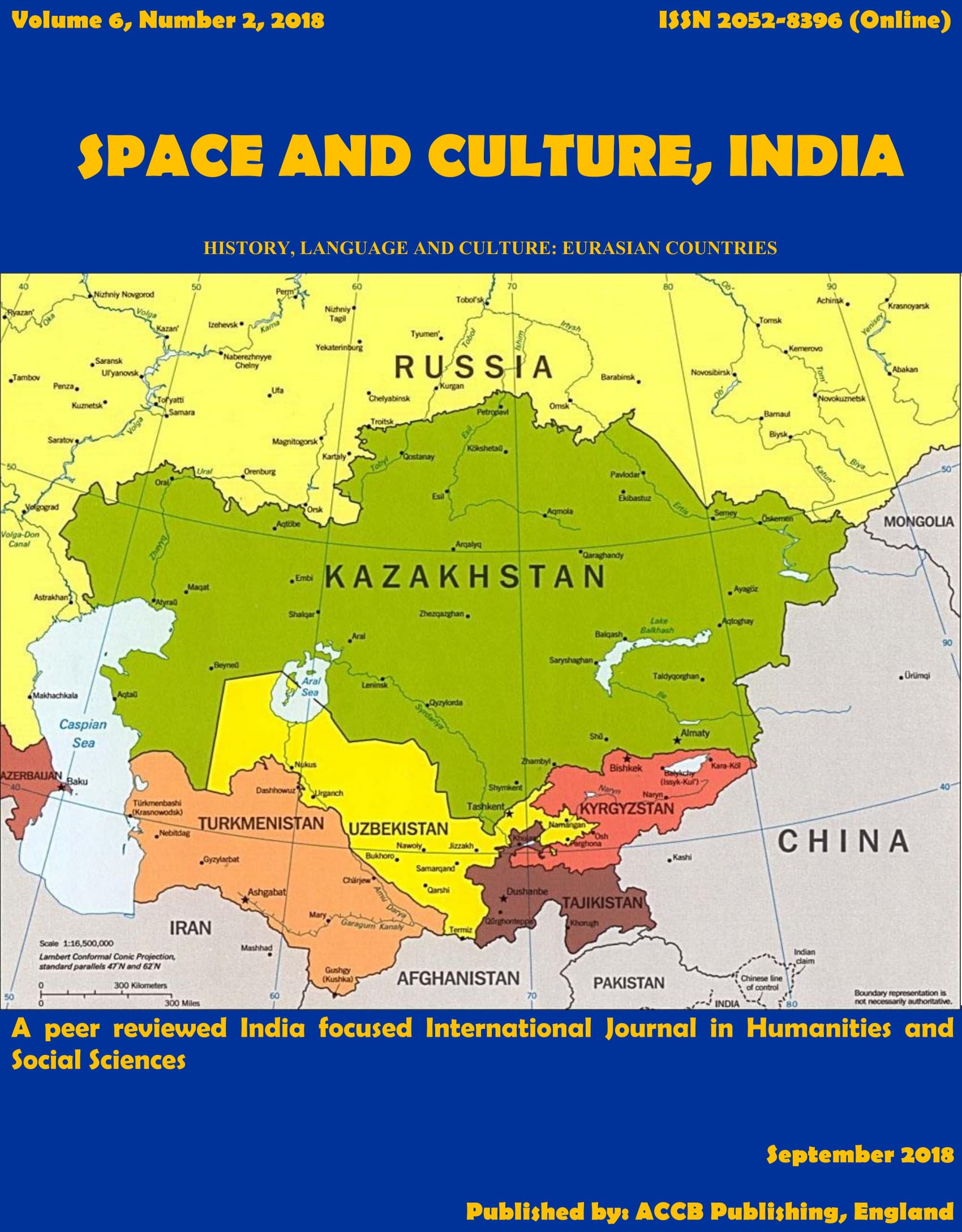The Comparative Analysis of Kazakh and Polish Dramatic Works

Abstract
The article compares the dramatic works of the famous writers Slawomir Mrozek, Tadeusz Rozewicz and Sadykbek Adambekov, Kaltay Mukhamedzhanov in the aspect of Kazakh-Polish literary ties that have had a long history. The analysis is conducted taking into account the socio-political situation, which was formed in the 1960s-1980s and found its reflection in the plays written by these authors.
The authors emphasise that the influence of historical and social problems on the personality, moral-humanistic principles, etc. are interpreted not only by the course of action of the drama (conflicts of characters) but implemented by the psychology of the characters. The role of the characters' language is taken into account, the similarity and difference in the thematic, artistic-ideological, compositional, and plot structure of the plays of Kazakh and Polish playwrights are determined, and their artistic skills in creating the system of images are identified.
Separate provisions of the article are reasoned by the conclusions and statements of well-known Anglo-American, Polish, Russian and Kazakh scientists, which can be found in their scientific-theoretical and scientific-methodical works concerning the problems of the study of artistic ties in the history of world literature.
Keywords
Turco-European Cultural-Spiritual Ties, Kazakh-Polish Literary Ties, National Mentality, Sadykbek Adambekov, Kaltay Mukhamedzhanov, Slawomir Mrozek, Tadeusz Rozewicz, Conflict, Plot, Composition, Kazakh and Polish Playwrights.
References
Adambekov, S. (1959). Zolotoi nozh [Golden Knife]. Almaty: Kazakhskaya literatura.
Adambekov, S. (1989). Vorota Khodzhanasyra [The Gate of Khodzhanasyr]. Almaty: Pisatel. (p. 317).
Al, D. (2013). Osnovy dramaturgii: Uuchebnoe posobie [Fundamentals of playwriting: Textbook] (6th ed.). Sankt- Petersburg: San, Planeta muzyki. (p. 288).
Aqtay, G. (2015). Kazakhsko-polskie kulturno-literaturnye svyazi [Kazakh-Polish cultural and literary ties]. In Ualikhanovskie chteniya-21: Materialy mezhdunarodnoi nauchnoi konferentsii, Kazakhstan, Kokshetau, 17-18 aprelya [Ualikhanov’s readings-21: Materials of the international scientific conference, Kazakhstan, Kokshetau, 17-18 April] (Vol. 1, p. 427). Kokshetau.
Belinsky, V. (1999). Sochineniya v trekh tomakh [Works in three volumes] (Vol. 2, p. 61). Moscow.
Block, H. (1963). Mallarme and the symbolist drama. Detroit: Wayne State University Press. (p. 211).
Brecht, B. (1965). Teatr [Theater] (Vol. 1, p. 499). Moscow.
de Ghelderode, M. (1979). Dramaturge et conteure: Actes de collogue francais-polonais. Wroclaw, Poland. (p. 287).
Fetisov, M. (1956). Literaturnye svyazi Rossii i Kazakhstana [Literary links of Russia and Kazakhstan]. Moscow. (p. 346).
Gogol, N. (1956). Sobranie sochinenii [Collected works] (Vol. 6, p. 116). Moscow.
Gorbunov, E. (1960). Idei, konflikty, kharaktery [Ideas, conflicts, characters]. Moscow: Sovetskii pisatel. (p. 16).
Ismagulova, B. (2006). Khudozhestvenno-dramaturgicheskoe dvuyazychie: sotsiolingvisticheskii i psikholingvisticheskii aspekty: Avtoreferat dissertatsii na soiskanie uchenoy stepeni doktora filologicheskikh nauk [Artistic-dramatic bilingualism: Sociolinguistic and psycholinguistic aspects: PhD thesis abstract]. Almaty. (p. 12).
Jennings, S. (2009). Dramatherapy and social theatre: Necessary dialogues. Routledge. (p.38).
Khalykov, K. (2015). Theatre semiotics: The creation of meaning in scenography in the Kazakh drama theatre. Journal of Political Science KNU Series, Philosophy and Cultural Studies, 1(50), 44-51.
Kirchner, M. (1992). Kazakh and Karakalpak. In Johanson, L. & Csató, É. Ã. (Eds.), The Turkic Languages. London: Routledge. (pp. 318-332).
Konrad, N. I. (1957). K voprosu o literaturnykh svyazyakh [On literary links]. Izvestiya AN SSSR, 16(4), 304.
Konrad, N. (1966). Zapad i Vostok [West and East]. Moscow: Nauka. (p.337).
Madanova, M. (1999). Kazakhsko-frantsuzskie literaturnye svyazi XX veka i problemy sravnitelnogo literaturovedeniya: Avtoreferat dissertatsii na soiskanie uchenoy stepeny doktora filologicheskikh nauk [Kazakh-French literary ties of the twentieth century and the problems of comparative literary studies: Doctoral thesis abstract]. Almaty. (p. 55).
Maftei, S.-S. (2013). Philosophy as ‘artwork’: Revisiting Nietzsche’s idea of a ‘philosophy’ from the point of view of the ‘artist’. Procedia: Social and Behavioral Sciences, 71, 86-94. DOI:10.1016/j.sbspro.2013.01.012
Mayemirov, A., Khalykov, K., & Nurpeis, B. (2015). Ethnic and cultural aspects in the development of Kazakh theatres during the Independence Period: The problems of human existence. Folklore, 62, 201-224. Retrieved 2 October 2017 from, www.folklore.ee/folklore
Mrozek, S. (1990). Khochu byt loshadyu: Satiricheskie rasskazy i pesy [Want to Be a Horse: Satirical stories and plays)]. Moscow: Molodaya gvardiya. (p.310).
Mrozek, S. (1991). Boinya [Slaughterhouse] (Shatalova, Z. Trans.). Moscow: Iskusstvo. (p. 321).
Mrozek, S. (2001). Karol [Karol]. In Testarium: Izbrannye pesy i proza [Testarium: Selected plays and prose] (Shatalova, Z. Trans.). Moscow: Art-Flex, Vakhazar, 2001. (p. 321)
Mrozek, S. (2001). Politsiya [Police]. In Testarium: Izbrannye pesy i proza [Testarium: Selected plays and prose]. Moscow: Art-Flex, Vakhazar. (p. 832).
Mukhamedzhanov, K. (1989). Izbrannye pesy [Selected plays]. Almaty: Pisatel. (p. 121).
Nogerbek, B. (2010). Folklore traditions in Kazakh cinematography. San’at: Journal of the Academy of Arts of Uzbekistan, 1, 58-61. Retrieved 2 October 2017 from, http://sanat.orexca.com/2010/2010-1/baury
Nurgali, R. (2001). Iskusstvo dramy [The art of drama]. Almaty: Pisatel. (p. 576).
Nurpeis, B. (2013). Kazakh theatrical tradition and succession of Eurasian culture. In Proceedings of world e-conferences on advances in science and technology, Amsterdam, Netherlands, June 12-13 (pp. 65-87).
Pfister, M. (1991). The theory and analysis of drama. Cambridge University Press. (p. 339).
Rozewicz, T. (1979). Izbrannoe: Poemy, pesy, proza [Selected works: Poems, plays, prose]. Moscow: Khudozhestvennaya literatura. (p. 320).
Satpaeva, Sh. (1988). Literaturnye svyazi [Literary links]. Almaty: Nauka. (p. 253).
Soltanaeva, E. (2009). Kazakhsko-russkie literaturnye svyazi v kontse XX veka: Avtoreferat [Kazakh-Russian literary ties at the end of the twentieth century: Thesis abstract]. Almaty. (p. 3).
Shapauov, A. (2014). The history of development and investigation of Kazakh national drama. Life Science Journal, 11(6), 206-209.
van Kesteren, A. (1975). Moderne dramentheorie. Kronberg. (p. 124).
Wellwarth, G. (1986). Modern drama and the death of God. London. (p. 97).
Zhirmunskii, V. (1979). Izbrannye trudy: Sravnitelnoe literaturovedenie: Vostok i Zapad [Selected works: Comparative literary studies: East and West]. Leningrad. (p. 138).
Zhirmunskii, V. (1979). Sravnitelnoe literaturovedenie: Vostok i zapad [Comparative literary studies: East and West]. Moscow: Nauka. (p. 495).